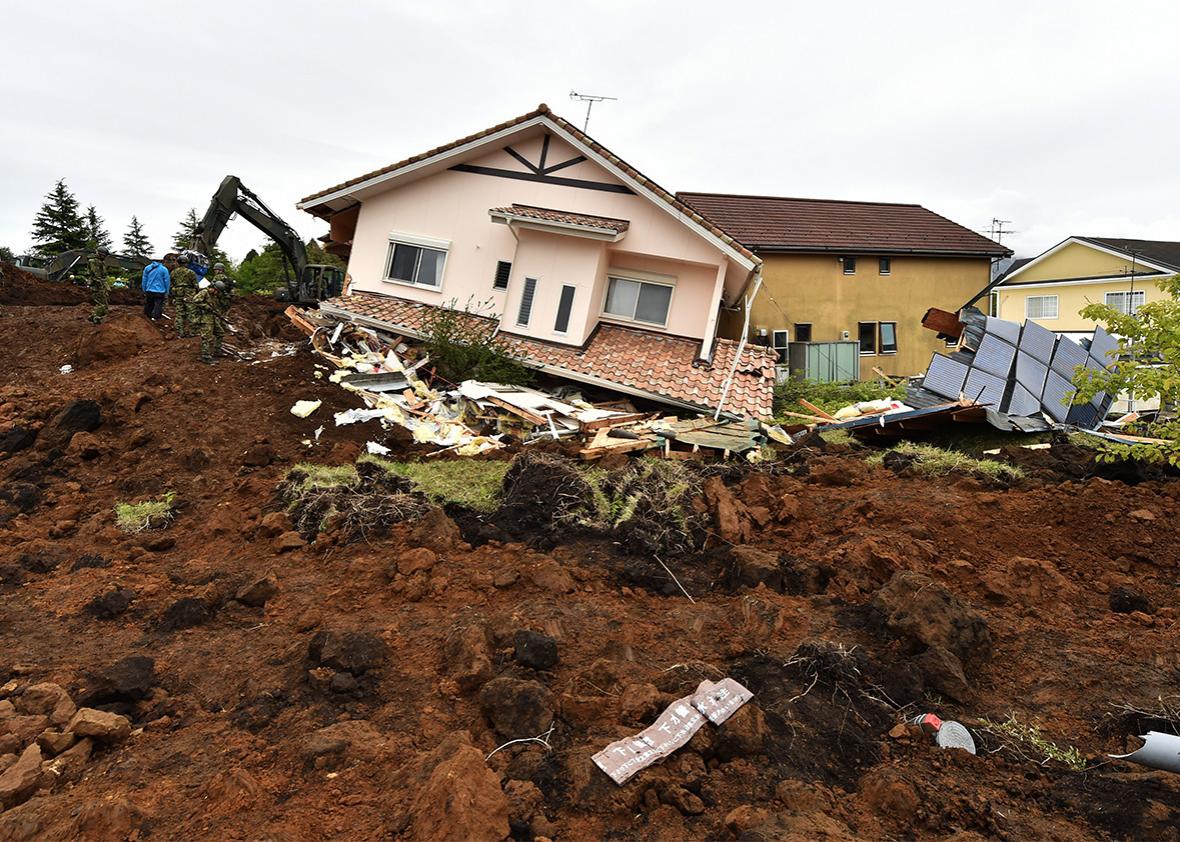This weekend’s series of massive, deadly earthquakes in Japan and Ecuador seems like an anomaly. But what’s unusual is not that they happened so close in time to each other—it’s that the two quakes both struck highly populated areas, resulting in more catastrophe, and more news coverage.
The 7.8-magnitude earthquake in Ecuador may have followed closely on the heels of a series of earthquakes and aftershocks—the largest of which reached a 7.3 magnitude—in Japan, but the quakes had nothing to do with one another, says Jeroen Ritsema, a professor of geophysics at the University of Michigan.
“There’s no reason to believe they’re related,” he says. “Sometimes earthquakes are closely clustered. Sometimes they’re not.” Even when they occur back to back, he says, they aren’t necessarily caused by each other. In this case, although the quakes occurred on both sides of the Pacific Ocean, Ritsema says, they involved completely different tectonic plates and therefore aren’t related.
They also aren’t all that rare. Ritsema says magnitude 7 earthquakes similar to what struck Japan happen around the world about 15 times a year (a fraction of the more than 1.4 million smaller earthquakes that occur every year). Despite this near-monthly frequency, we tend not to hear about these larger quakes—because they don’t affect people all that often.
Similarly, 7.8-magnitude earthquakes like the one that struck Ecuador (killing at least 350 people and causing billions of dollars’ worth of property damage) occur less often, but even they are not that rare, statistically speaking. Ritsema says they take place on average about once every one or two years. Again, many occur in areas where they cause little noticeable damage.
“Sometimes these events are in the middle of the ocean, far from population centers,” he says. “We detect them. We see them. We record them very well. But they don’t hurt anybody so they go unnoticed by the general public.”
Ritsema says that one specific factor influences an earthquake’s destructive qualities even more than its magnitude: “Location, location, location.” What was unusual this week was that both quakes happened in fairly densely populated areas. As a result, they affected a large number of people and drew the attention of the world.
It could have been worse, though. For example, the 1995 earthquake that struck Kobe, Japan, measured 6.9 magnitudes—similar to what happened in Kumamoto—but it occurred in a more densely populated area than this week’s events. “That was right in the city,” Ritsema says. As a result, it killed more than 6,000 people.
An equivalent-size quake—smaller than the ones that occurred this week—in a city such as Los Angeles would be devastating. It wouldn’t even need to occur on the famous San Andreas Fault to become deadly. “Los Angeles has other faults much closer to population center that could be much more dangerous, even though the magnitudes could be smaller,” Ritsema says.
Will we see more multiple events like this in the future? Earthquakes will keep on occurring, perhaps right after one another, and perhaps months apart, Ritsema says. But whether they occur where humans are densely populated is merely a factor of chance—the geological factors at play in an earthquake have nothing to do with how many humans dwell above the surface. “It could be a span of years where nothing happens,” he says.
Although he said earthquakes remain in general something to be cautious and prepared about, the events in Ecuador and Japan don’t elevate future risk. “There’s nothing in the past week that indicates a change in terms of large-plate tectonics,” Ritsema says. “The Earth hasn’t changed. This is normal Earth behavior. If you look at the long-term catalogs for earthquakes over spans of years, there’s nothing really telling us that this is a cluster of events. It’s just statistics.”
